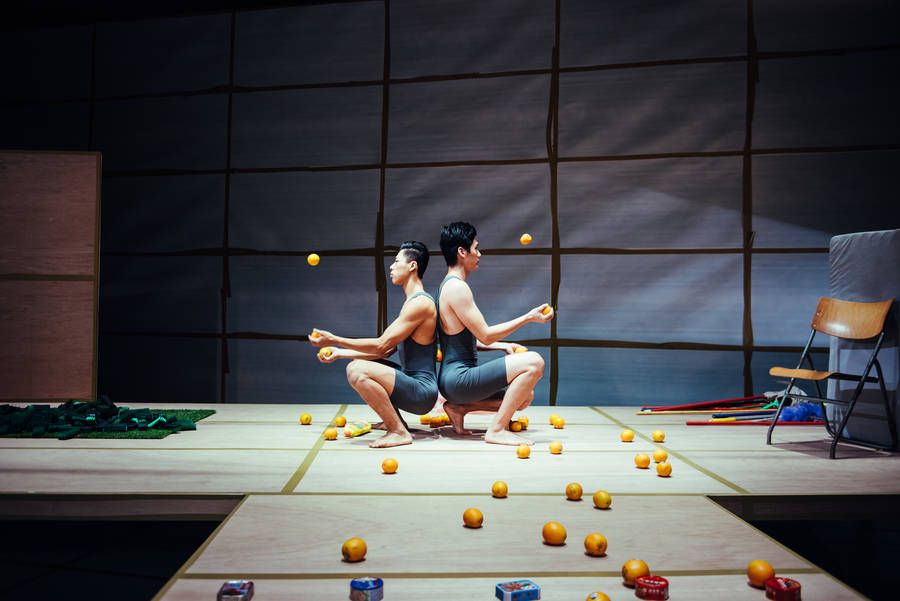Blog
How Long Is Now? Infuses Magic into Everyday Life

Written by Yi-Wei KENG Dramaturg of National Kaohsiung Center for the Arts (Weiwuying)
The world of circus is suffused with magic. It suffices to look at traditional circus, which is made up with two components: spectacle and peril. In the circus tent, spectacle supplies sights one cannot see in everyday life. It abounds in the display of perils such as putting tamer’s head into the mouth of animals as ferocious as lion and tiger or a stroll on the tightrope. All this contains seeds of failure that are hard to avoid, and the price of failure is a handsome one to pay. The fun of watching circus derives from the performers’ overcoming of these perils.
In the 1970s a movement known as “new circus” emerged. Its rejection of the use of animals gradually gained currency and changed what had been originally the central elements of circus. The appeal of the spectacle used to be associated with colorful exoticism, while now it has been substituted by artistic visual design from costume to lighting. Cirque du soleil stands out as a salient example of this. With impeccable stage and costume design, the whole aesthetic appeal no longer smacks of the Bohemianism of a wandering circus company. What operates at the helm is a globalized sense of luxury. Another important change in the spectacle is the application of technology, which brings the audience extraordinary sensations by the use of media, robot, and massive mechanism.
Whereas perils still linger in circus performance, the success of a show no longer hinges on it. It even becomes an object of stage irony. An analogy can be drawn to elaborate this point: school education used to rely on physical punishment or harsh discipline to correct mistakes, while now as the concept changes, encouragement and love become prioritized such that mistakes are not that unforgivable. In this kind of spirit, contemporary circus highlights the body enacting the performance by incorporating elements of failure as part of the show.
Baboo LIAO, director of How Long Is Now?, fuses concepts in performance art with the making of this show. It is a remarkable strategy in line with the direction toward which contemporary circus is evolving. Since forms of contemporary art that maximize cross-disciplinary potentials are legion—with dance taking place in art galleries and theater cropping up in the streets thanks to synchronized earphone—every art is creating their new vocabulary by drawing on other fields of practice. How Long Is Now? focuses on objects commonly seen in Taiwanese dollar stores in order to reveal ways of seeing these commodities in a new light. In putting them under the spotlight, the show unveils a spectacle originating from everyday life. To put on this show, performers of Formosa Circus Art are running a different kind of risk: they set foot on a terra incognita by forgoing the acrobatics with which they are mostly at home, so no one can apply existing categories to assess this piece.
How Long Is Now? is the meeting point of new definitions of spectacle and perils and the show runs with a conquering sense of humor. This is why the show incited waves of laughter among children when it toured France and Korea. How Long Is Now? probes into what lies at the heart of every creation i.e. imagination, where all the magic comes from.
Top Hash Tags
You May Also Like
The Organ Can Improv Too! -Thierry ESCAICH
Many people think improvisation is only for jazz, but in fact, several hundred years ago, organists were the best at it. Thierry ESCAICH, a French organist who will perform at Weiwuying in October, is one of today's few amazing improv organists.

Tracking Focus, Corporeal Signals in Dance
The existence of "the self" emerges from consciousness, yet the body predates our self-awareness, making it far older. Even as our sense of self fades with age, the body remains our companion until the end. Through education and socialization, our consciousness has come to dominate our physical awareness, creating a disconnect. Yet the body keeps sending signals of varying intensity. Dance offers a vital path to rebuild this connection and examine our relationship with our bodies. This gave rise to the theme "Dance, the History of Body," exploring how dance films reflect on body and identity.



